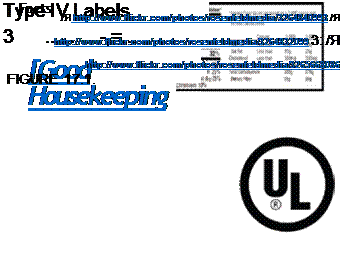Type I labels are product seals licensed by governments or third-party private entities based on a multitude of criteria or impact. For example, the U. S.-based Green Seal or Sweden’s Nordic Swan Type I seals can vary substantially in their criteria, which may or may not be known or understood by customers.
Type II labels are informative, self-declared seals about the environmental qualities of a product, such as “contains 75 percent recycled paper.”
Type III labels offer quantified product information based on a life cycle assessment. These labels are best for comparisons between products or services. There are few examples of Type III labels in use. One in development is the Reveal label.
Type IV labels are single-issue seals licensed by companies or organizations. Examples include the Leaping Bunny (signifying no animal testing), the Good Housekeeping Seal of Approval, Underwriter’s Laboratories insignia, and the Forest Stewardship Council seal.
See examples of all of these types of labels in Figure 17.1
 |
Type I Labels
Type II Labels
“Dolphin Safe” “Organic”
Type III Labels
|
Nutrition r«u t* l г гкийи j ь it t’i І»ИІИіІ|і Д їй – fcrrtqSalfer ityttFufla_______________________ ІТЧ SpmsfffcrftftpS ЫиЩ шшвв ":л Vfjrf* SJ’ iW=ii4»>M * . ил -: jr* – йсt 17 W. SeVlwn &vRt.*u я*. *ИВшЬа%*ЩЧ № ‘ ‘ bto№ ■ №U№ h ~ |
 |
|
2
Because socially – and ecologically-oriented labeling address many different types of issues, it’s difficult for customers to know which criteria in each are actually being measured.



